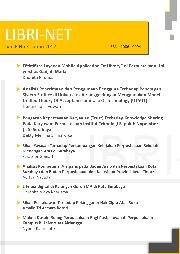Dental Journal (Majalah Kedokteran Gigi)
ISSN 1978-3728
Vol. 43 / No. 2 / Published : 2010-06
Order : 11, and page :102 - 106
Related with : Scholar Yahoo! Bing
Original Article :
The apical leakage of mineral trioxide agregate as the retrograde filling material with various mixing agents
Author :
- Ema Mulyawati*1
- Department of Conservative Dentistry Faculty of Dentistry, Gadjah Mada University Yogyakarta - Indonesia
Abstract :
Background: Mineral trioxide agregate (MTA) is relatively considered as a new material in endodontic. It even has been used as retrograde filling material due to its biocompatibility, antibacterial effect, sealing ability and anti-moist effect. Some materials have been used as mixing agent to achieve an appropiate setting of MTA. Purpose: The aim of this study is to investigate the effect of the mixing agents of MTA towards the apical leakage when they are used together as retrograde filling materials. Method: The samples of this research consist of 30 human extracted upper central incisors. First, the crown of each tooth is sectioned. The root canals are prepared by using the conventional technique and then are obturated with gutta percha. After cutting the root apex, 2mm from apical, class 1 cavities are prepared by using fissure bur with the depth of 3mm. The samples then are divided into 3 groups with 10 teeth for each. Group I uses aquabidest as mixing agent of MTA (MTA- aquabidest), group II uses saline (MTA-saline), while group III uses 0.12% chlorhexidine (MTA-chlorhexidine). The apex of each group then is filled with the mixing MTA determined already. Afterwards, clearing method is used to evaluate the apical leakage. The apical leakage actually is determined by measuring the depth of methylene blue penetration with stereomicroscope. The statictical analyses of the linear dye penetration then are performed with analysis of varians ANOVA. Result: The dye penetration for both MTA-aquadest and MTA-saline groups indicates the lowest penetration, and there is even a significant difference compared with MTA-0.12% chlorhexidine group (p<0.005). Conclusion: It can be concluded that aquabidest and saline as mixing agents of MTA produce less apical leakage compared with 0.12% chlorhexidine.
Keyword :
Apical leakage, retrograde filling, MTA, saline, chlorhexidine,
References :
Gutmann JL ,(2006) Problem solving in endodontics. St Louis : Mosby
Archive Article
| Cover Media | Content |
|---|---|
 Volume : 43 / No. : 2 / Pub. : 2010-06 |
|













